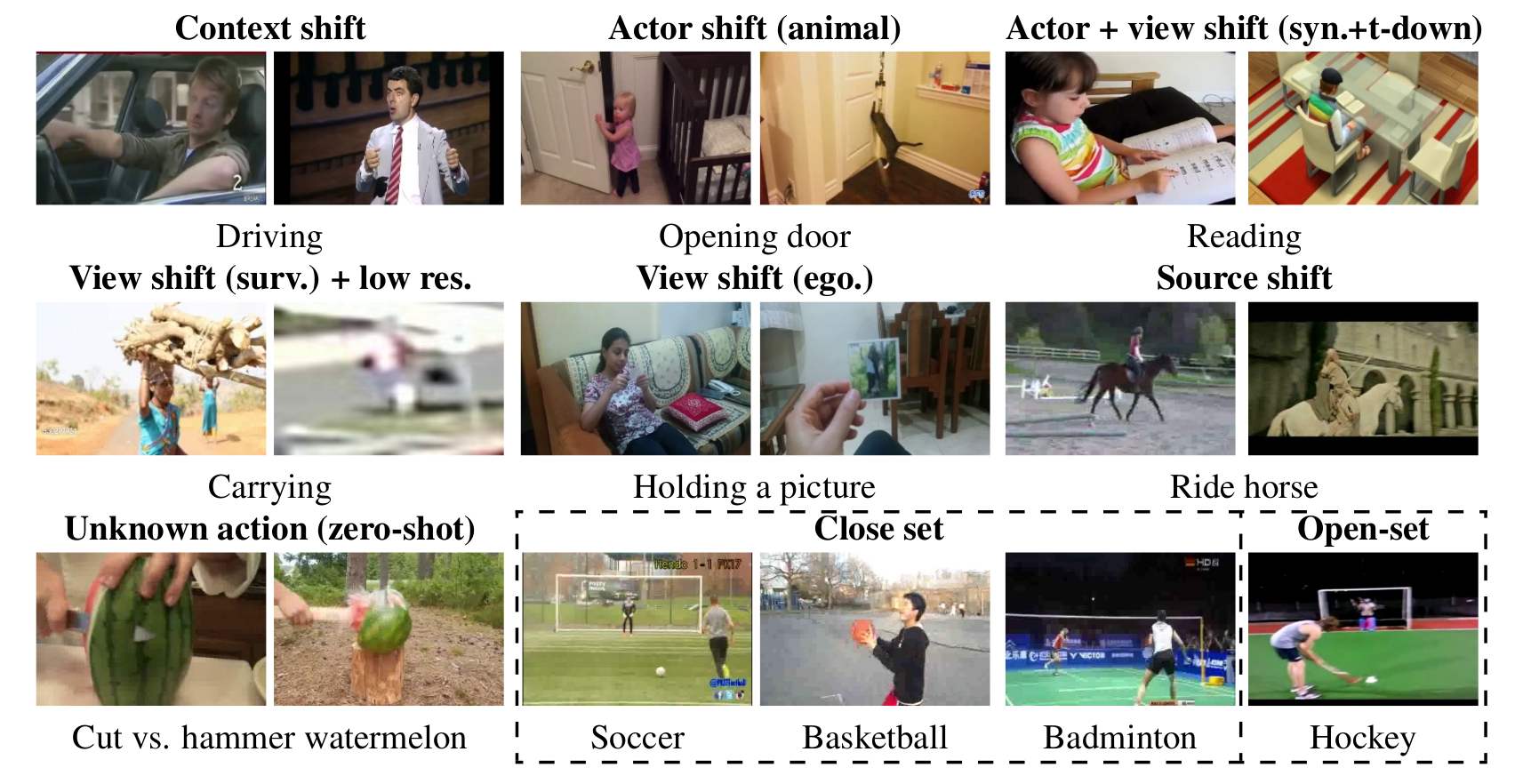Uncovering the Hidden Dynamics of Video Self-supervised Learning under Distribution Shifts
Video self-supervised learning (VSSL) has made significant progress in recent years. However, the exact behavior and dynamics of these models under different forms of distribution shift are not yet known. In this paper, we comprehensively study the behavior of six popular self-supervised methods (v-SimCLR, v-MoCo, v-BYOL, v-SimSiam, v-DINO, v-MAE) in response to various forms of natural distribution shift, i.e., (i) context shift, (ii) viewpoint shift, (iii) actor shift, (iv) source shift, (v) generalizability to unknown classes (zero-shot), and (vi) open-set recognition. To perform this extensive study, we carefully craft a test bed consisting of 17 in-distribution and out-of-distribution benchmark pairs using available public datasets and a series of evaluation protocols to stress-test the different methods under the intended shifts. Our study uncovers a series of intriguing findings and interesting behaviors of VSSL methods. For instance, we observe that while video models generally struggle with context shifts, v-MAE and supervised learning exhibit more robustness. Moreover, our study shows that v-MAE is a strong temporal learner, whereas contrastive methods, v-SimCLR and v-MoCo, exhibit strong performances against viewpoint shifts. When studying the notion of open-set recognition, we notice a trade-off between closed-set and open-set recognition performance if the pretrained VSSL encoders are used without finetuning. We hope that our work will contribute to the development of robust video representation learning frameworks for various real-world scenarios. The project page and code are available at: https://pritamqu.github.io/OOD-VSSL.
PDF Abstract NeurIPS 2023 PDF NeurIPS 2023 Abstract




 UCF101
UCF101
 Kinetics
Kinetics
 STL-10
STL-10
 HMDB51
HMDB51
 Kinetics 400
Kinetics 400
 RareAct
RareAct
 Sims4Action
Sims4Action